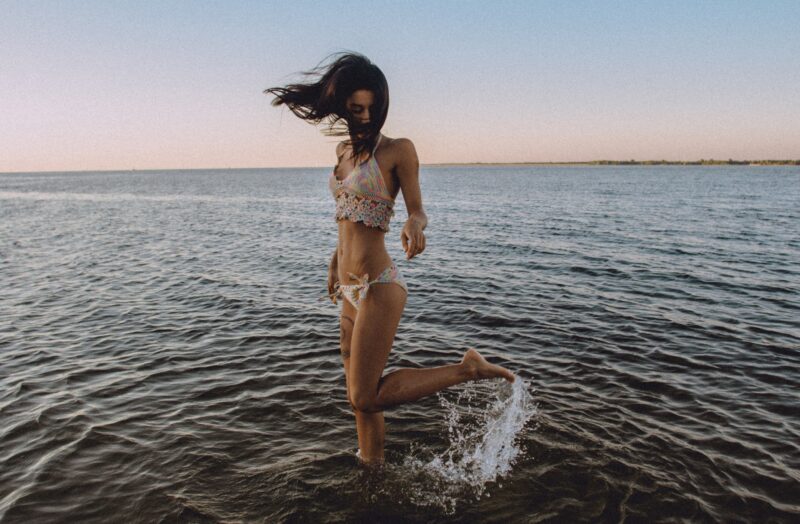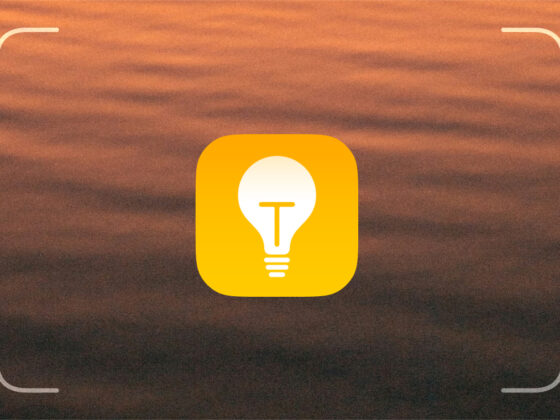Looking to go beyond that quintessential beach sunset and capture unique, frame-worthy beach photos? Beach photography is more challenging than it looks. The combination of open water, reflecting sunlight, and blowing sand isn’t optimal for beach photography. Fortunately, you can make adjustments by carefully choosing your photography location and shoot times to improve your chances of getting the perfect shot with your iPhone.
What settings should I use for beach photos?
Your iPhone camera is pretty intuitive, and for the most part, you won’t have to mess with the settings for beach photography. There are, however, a few exceptions that we’ll discuss below.
1. Use Burst mode for shooting crashing waves
Burst mode is generally used for capturing action shots, and waves crashing on the shore definitely fit into this category. When capturing the movement of the sea, Burst mode comes in very handy. Simply hold your finger on the shutter and drag it to the left for continuous shooting. You can choose your favorite shot later.
2. Use a tripod for low-light conditions
You can’t rely on optimal lighting for your beach photography. But by investing in a small, portable tripod, you can take photos in all types of lighting without having to worry about introducing blur into your images. Tripods are also great for shooting action shots, using the self-timer, and experimenting with new camera angles.
3. Don’t rely on your iPhone’s autofocus to get it right
Your iPhone camera includes a solid autofocus system that does a great job of finding focal points and keeping them sharp in the resulting image, but it’s not foolproof. Before tapping the shutter, hold down on the spot you want to focus on — whether it’s a sailboat, a seashell, or a rock in the foreground. You’ll know your subject is in focus when you see the yellow box surrounding it on your screen.
How to jazz up beach landscape photography
When you consider that most beach photos consist of a wide expanse of sand and water, you begin to understand how shooting beach landscapes can be less than inspiring. Here are some tips for finding interesting compositions for beach landscape photography.
1. Shoot during the golden hour
The golden hour is the hour right after sunrise or right before sunset when the world is bathed in a warm glow that is perfect for beach photography. Whether you’re shooting portraits, landscapes, or beach-themed selfies, the golden hour is the perfect time to capture stunning photos.
2. Shoot during stormy weather
From a photography standpoint, there’s nothing less interesting than a clear, empty blue sky. Unless you throw in a wide expanse of blue water. Stormy weather, on the other hand, will add interest and an element of surprise to your beach photos. Provided that it’s safe to go out, look for cool cloud formations, unique rays of sunlight, or big waves to highlight in your photos.
3. Look for a strong focal point to anchor your composition
Finding or creating a focal point in your image is a great way to break up the expanse of sand, sky, and water in your composition. Seek out rock formations, sailboats, birds, or trees to add interest to your image. Can’t find a focal point? Create one by strategically placing a seashell in the foreground or finding a person who will add a sense of scale to your beach photo.
4. Change up your camera angle
One of the best ways to change up your composition is to stop shooting at eye level and get down low or up high for your next photoshoot. For beach photography, a shot from ground level can add impact to your image, especially if you’re able to capture the waves as they move toward your camera.
How to take more interesting sunset beach photos
When you introduce the sunset or sunrise into your beach landscapes, you’re already adding a bit of interest to what might be a dull composition, but even sunset photos can go from blah to beautiful with careful planning.
1. Include something in the foreground
Don’t neglect the foreground when taking your next beach sunset photo. Even a single rock will go a long way toward creating a more interesting composition. Other options include grasses, palm trees, or even a solitary seagull. Shooting with friends? Try a few silhouettes while you’re waiting for the sun to sink lower in the sky.
2. Don’t leave after the sun dips below the horizon
How many times have you watched an amazing sunset and then quickly packed up your bags to head back to civilization? Next time you’re shooting an amazing sunset, stick around for the encore! Once the sun disappears, the blue hour begins, and there’s a good chance you’ll be treated to an array of gorgeous colors in the sky before twilight sets in.
3. Shoot cloudy sunsets
Just because the skies are cloudy and you can’t see the sun doesn’t mean you should give up on your sunset photoshoot. Head to the beach anyway and see what kind of cool compositions you can create. At the very least, you will get to practice your beach photography skills, and if the sun peeks out from behind the clouds even for a minute, you’ll be treated to all kinds of incredible photo opportunities.
4. Don’t center the horizon
Many beach sunset photos include a scene that is half water and half sky with a straight horizon running right through the middle of the image. This does little to hold your viewer’s attention, even if you’ve created an otherwise interesting composition. Before tapping the shutter, ask yourself: Is the most interesting part of the scene the sky or the land/water? Now, tilt your camera so that your horizon sits below or above the imagined center line in your scene.
Best beach photography poses for portraits
Shooting beach portraits with your iPhone? Here are some poses that you can try to add interest to your images.
1. Jumping on the beach silhouette
Capturing silhouettes against a bright sky makes for a fun beach photoshoot. Beach silhouettes are best captured during the golden hour and as the sun is setting. Ask your model to hold still while you lock the focus by holding your finger on the screen. Now, ask them to try a variety of jumping poses while you use Burst mode to capture them.
2. Walking barefoot in the water
When the sea is calm, ask your subject to walk slowly along the shore with the waves lapping at their bare feet. Position yourself in front of them, farther down the shore, and take some full-body shots as they walk toward you. For this pose, it’s best to have the sun behind you to capture the glow as it hits your model.
3. Looking-over-the-shoulder pose
This pose is great for all types of portraits, not just beach photos. Have your model stand with their back to you. Now ask them to slowly turn to face you while looking over their shoulder. Golden hour lighting is optional but perfect for capturing the warm glow on your subject’s face and an expansive beach in the background.
Beach photography ideas for family photos
Want to commemorate your family beach vacation with an iPhone photoshoot? Here are some ideas for great surfside family photos.
1. Ask your kids to build a sandcastle and photograph the result
Get down low for this one and use Burst mode to capture your family as they work to build the perfect sandcastle before the tide comes in and destroys it. Use a tripod and remote shutter to include yourself in the shenanigans.
2. Capture your family running through the waves
Stand perpendicular to the waves as they come ashore and ask your kids to run through them while you use Burst mode to capture every silly moment. Keep the sun behind you if possible, and use the AF/AE lock function to ensure that you have good focus.
3. Walking hand-in-hand toward the sunset
This shot can be captured from behind or in front of your family, depending on the look you’re after. Ask your family to hold hands and walk slowly and naturally along the shore, looking for shells and observing the wildlife. Use Burst mode to capture different poses along the way. This pose is awesome when the sun is setting, and you can get a bit of that sunset glow reflecting off the water.
The key to fabulous beach photography is finding great compositions to break up the monotony of sand and sea. Change your perspective and your camera angle, and you’ve got a great shot in the making. And if you also want to shoot other nature photography in more original ways, we’ve covered that in an earlier guide.



